5.3 Restoring a File Version Using NetStorage
After your files meet the prerequisites for having previous versions located in the archive database, you can access file versions whenever you need to through the NetStorage interface. For information about prerequisites, see Section 3.0, Prerequisites and Guidelines for Retrieving File Versions.
To access and restore previous versions of a file:
-
Navigate to your NetStorage server interface.
-
Launch an Internet Explorer (IE) Web browser by double-clicking the icon on your desktop.
-
In the main toolbar, click .
-
In the field of the Open dialog box, type the URL of your NetStorage server location.
https://arksvr.example.com/oneNet/NetStorageReplace arksvr.example.com, with your archive server’s actual Domain Name Service (DNS) name or IP address (such as 192.168.1.1). Get this information from your Archive and Version Services administrator.
-
-
At the NetStorage Login page, log in to the NetStorage server using your and .
After you log in, the Web browser uses Secure Hypertext Transfer Protocol (HTTPS) to open NetStorage with a secure connection to your network data. The content on this Web page varies according to the services that your company offers to you.
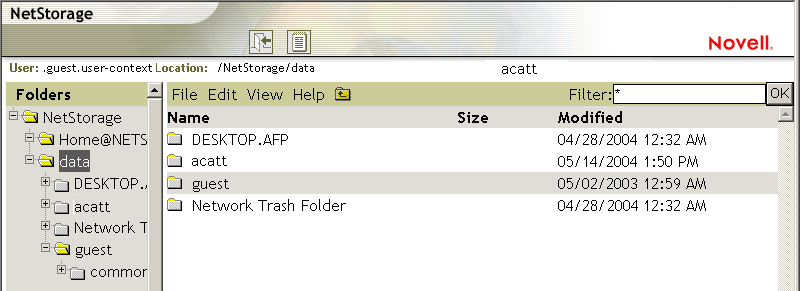
-
Use the left navigator of the NetStorage interface to find the file or directory that you want to use as your entry point into the archive database. Because the search currently progresses only forward through directories in the archive database, it is best if you know the path of the file version before entering the to search for the file.
Use the following table to determine what item to select as your entry point into the archive database:
To Access the Archived Versions of this Storage Object
Navigate to This Location
Then Select This Item
A current file
The current file
The current file
A deleted file in a current directory
The directory that the deleted file was in when it was deleted
The directory that the deleted file was in
A deleted file in a deleted directory
The directory that the deleted directory was in when it was deleted
The directory that the deleted directory was in
All current files in a current directory
The current directory
The current directory
All deleted files in a deleted directory
The directory that the deleted directory was in when it was deleted
The directory that the deleted directory was in
-
To access the archive database, use one of the following methods:
-
On the NetStorage main toolbar, click .
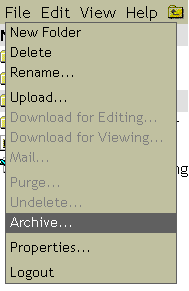
-
Right-click the selected item to open a pop-up menu, then click .
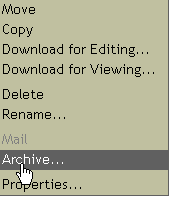
Use the following table to determine which step to go to next:
If You Select This Item
And This Condition Is True
Go to This Step
File
Only one file has ever used this name.
File Versions, Step 7
You previously used this filename for a deleted file or a renamed file, but versions of that file do not exist in the archive database.
File Versions, Step 7
You previously used this filename for a deleted file or a renamed file, and versions of that file still exist in the archive database.
Multiple Version Sets, Step 6
Directory
Directory Contents, Step 5
-
-
Directory Contents: If you selected a directory, review the archived contents of the selected directory, then select one of the items if you want to continue your search in this directory.
Depending on what you select, use the following table to determine which step to go to next:
If You Select This Item
Go to This Step
Directory
Directory Contents. Repeat the current step (Step 5).
File
File Versions. This is Step 7.
Multiple versions (of a File or Directory)
Multiple Version Sets. This is Step 6.
Nothing
Stop searching this directory.
You can stop your search in this directory if one of the following conditions is true:
-
There are no items in the list. Either file versions do not exist for files in this directory or you do not have the rights to access those files.
-
The list consists only of files and multiple version sets, but the file you want a version of is not listed.
Your Directory Contents dialog box looks similar to the following illustration. This example lists several unique files and multiple version sets that can be directories or files.
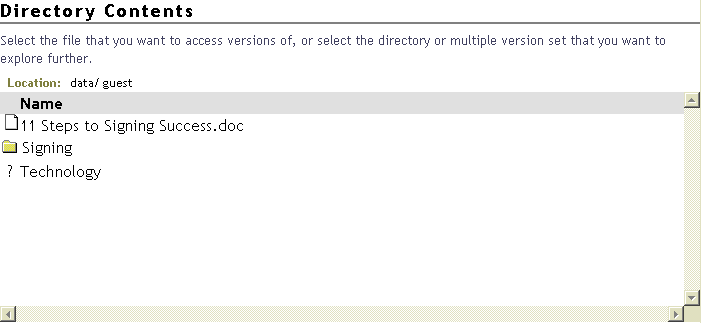
-
-
Multiple Version Sets: If multiple sets of file versions exist for that name, a Multiple Version Sets dialog box opens. Review the sets available of the selected file or directory, then select one of the items to continue your search in this directory.
Depending on what you select, use the following table to determine which step to go to next:
If You Select This Item
Go to This Step
Directory
Directory Contents. This is Step 5.
File
File Versions. This is Step 7.
Your Multiple Version Sets dialog box looks similar to the following illustration. This example lists multiple sets of file versions for the selected file. Review the state of the files that have existed.
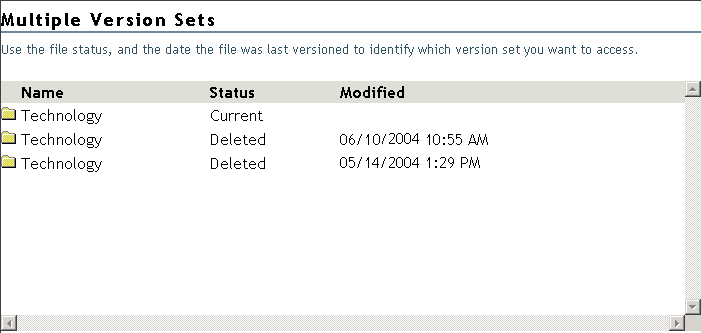
-
File Versions: Use the File Versions dialog box to restore a file version:
-
Review the archived time stamps of the versions in the list, then select the version of the file that you want to restore.
-
Specify the path and filename to use for the restored version.
In the field, type the path and filename where you want to restore the version, or browse to that location, type a filename, then click .
-
Click .
WARNING:The restored version overwrites any file by that name in the location.
For a large target file, the function might time out while waiting for the file transfer to be completed. If this happens, dismiss the error message and keep checking the process manually. Upon a successful restore, a confirmation message affirms the location of the restored file.
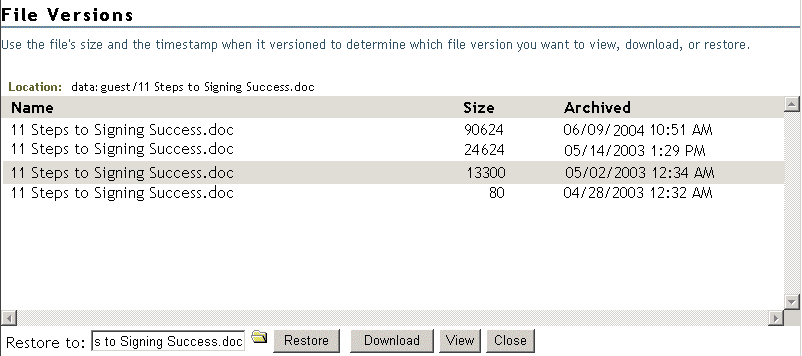
-